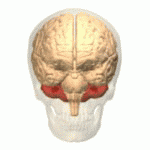Ataxic cerebral palsy
Editor-In-Chief: Prab R Tumpati, MD
Obesity, Sleep & Internal medicine
Founder, WikiMD Wellnesspedia &
W8MD medical weight loss NYC and sleep center NYC
| Ataxic cerebral palsy | |
|---|---|

| |
| Synonyms | N/A |
| Pronounce | N/A |
| Specialty | N/A |
| Symptoms | Ataxia, tremor, hypotonia, dysmetria |
| Complications | N/A |
| Onset | Birth |
| Duration | Lifelong |
| Types | N/A |
| Causes | Brain injury to the cerebellum |
| Risks | Premature birth, low birth weight, multiple births |
| Diagnosis | Clinical assessment, neuroimaging |
| Differential diagnosis | Friedreich's ataxia, spinocerebellar ataxia |
| Prevention | N/A |
| Treatment | Physical therapy, occupational therapy, speech therapy, medications |
| Medication | N/A |
| Prognosis | Varies; generally stable but lifelong |
| Frequency | Rare |
| Deaths | N/A |
Ataxic cerebral palsy is a subtype of cerebral palsy characterized by problems with balance and coordination. It is the least common form of cerebral palsy, accounting for approximately 5-10% of all cases. This condition is caused by damage to the cerebellum, the part of the brain that controls motor function.
Symptoms[edit | edit source]
Individuals with ataxic cerebral palsy often exhibit the following symptoms:
- Unsteady, shaky movements (ataxia)
- Difficulty with precise movements, such as writing or buttoning a shirt
- Poor balance and coordination
- Tremors or involuntary movements
- Speech difficulties due to lack of muscle control
Causes[edit | edit source]
Ataxic cerebral palsy is typically caused by damage to the cerebellum during prenatal development, birth, or early childhood. Potential causes include:
- Genetic mutations
- Infections during pregnancy
- Stroke or hemorrhage in the brain
- Traumatic brain injury
Diagnosis[edit | edit source]
Diagnosis of ataxic cerebral palsy involves a combination of:
- Medical history review
- Physical examination
- Neuroimaging techniques such as MRI or CT scan
- Developmental assessments
Treatment[edit | edit source]
While there is no cure for ataxic cerebral palsy, various treatments can help manage symptoms and improve quality of life. These may include:
- Physical therapy to improve balance and coordination
- Occupational therapy to assist with daily activities
- Speech therapy to address communication difficulties
- Medications to manage tremors and other symptoms
- Surgical interventions in severe cases
Prognosis[edit | edit source]
The prognosis for individuals with ataxic cerebral palsy varies depending on the severity of the condition and the effectiveness of treatment. Many individuals can lead relatively independent lives with appropriate support and therapy.
See also[edit | edit source]
References[edit | edit source]
External links[edit | edit source]
Search WikiMD
Ad.Tired of being Overweight? Try W8MD's physician weight loss program.
Semaglutide (Ozempic / Wegovy and Tirzepatide (Mounjaro / Zepbound) available.
Advertise on WikiMD
|
WikiMD's Wellness Encyclopedia |
| Let Food Be Thy Medicine Medicine Thy Food - Hippocrates |
Translate this page: - East Asian
中文,
日本,
한국어,
South Asian
हिन्दी,
தமிழ்,
తెలుగు,
Urdu,
ಕನ್ನಡ,
Southeast Asian
Indonesian,
Vietnamese,
Thai,
မြန်မာဘာသာ,
বাংলা
European
español,
Deutsch,
français,
Greek,
português do Brasil,
polski,
română,
русский,
Nederlands,
norsk,
svenska,
suomi,
Italian
Middle Eastern & African
عربى,
Turkish,
Persian,
Hebrew,
Afrikaans,
isiZulu,
Kiswahili,
Other
Bulgarian,
Hungarian,
Czech,
Swedish,
മലയാളം,
मराठी,
ਪੰਜਾਬੀ,
ગુજરાતી,
Portuguese,
Ukrainian
Medical Disclaimer: WikiMD is not a substitute for professional medical advice. The information on WikiMD is provided as an information resource only, may be incorrect, outdated or misleading, and is not to be used or relied on for any diagnostic or treatment purposes. Please consult your health care provider before making any healthcare decisions or for guidance about a specific medical condition. WikiMD expressly disclaims responsibility, and shall have no liability, for any damages, loss, injury, or liability whatsoever suffered as a result of your reliance on the information contained in this site. By visiting this site you agree to the foregoing terms and conditions, which may from time to time be changed or supplemented by WikiMD. If you do not agree to the foregoing terms and conditions, you should not enter or use this site. See full disclaimer.
Credits:Most images are courtesy of Wikimedia commons, and templates, categories Wikipedia, licensed under CC BY SA or similar.
Contributors: Prab R. Tumpati, MD

